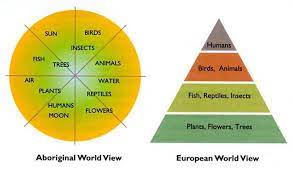Indigenizing my practice
During EDEF Theoretical Frameworks Education, I was able to participate in a group presentation on how to Foster Ethical Space in the classroom which focused on Western and Indigenous views. The text provided details on how Western and Indigenous cultures differ in their ways of knowing and learning, but emphasizes that one is not better than the other. Being able to reflect and teach this reading allowed me to better connect and understand how different cultures can be intersected, appreciated, and integrated within the classroom. Below are the two unanswered questions I created and attempted to answer to the best of my ability. By integrating all subjects with a lens that there are multiple ways of knowing and thinking I am beginning to decolonize and begin the call to action with Truth and Reconciliation in the classroom. There is still plenty of progress to be made and I will continue to grow and expand my learning and weaving Indigenous worldviews into my practice.

What is an example of how we can create ethical space in our classrooms that involve both Western and Indigenous views?
I found the reading very insightful on explaining the similarities and differences of Western and Indigenous views but I found that the question of how we can implement both perspectives in our classroom unanswered. One example of how I believe we can do this is to use the talking circle in the classroom. Depending on the class, you could try to incorporate a talking circle every day, every second day, or even once a week and it could be used in any subject. This could allow students to focus on their individuality among subjects but then share amongst the class to create a safe, comfortable space where everyone can share their perspectives and find connections and similarities with other people. In the text, Willie Ermine mentions that “Ethical space is formed when two societies, with different worldviews, are poised to engage each other.” and I believe using a talking circle can allow for different worldviews and perspectives to interact with one another in a calm, supportive environment.
What is one way we can connect students to Indigenous views outside of the classroom?
The next question that I came up with is what is one way that we can connect students to Indigenous views outside of the classroom? As the reading stated, Indigenous worldviews really focus on nature and how it is all connected therefore, having students connect with nature in a way they maybe haven’t before could be super beneficial to their understanding of different cultures. One way we can do this is by going on a nature walk. On the nature walk, there could be a scavenger hunt with important connections to Indigenous landmarks and resources. This would allow students to look for these unique features in a creative, experiential way. By doing this, it could show the students the importance of understanding different cultures while emphasizing that one is not necessarily better than the other, but different.
Reference for Image: Comox Valley School. https://www.comoxvalleyschools.ca/nalaatsi/wp-content/uploads/sites/47/2021/12/indigenous-and-western-worldviews.pdf
Recent Comments